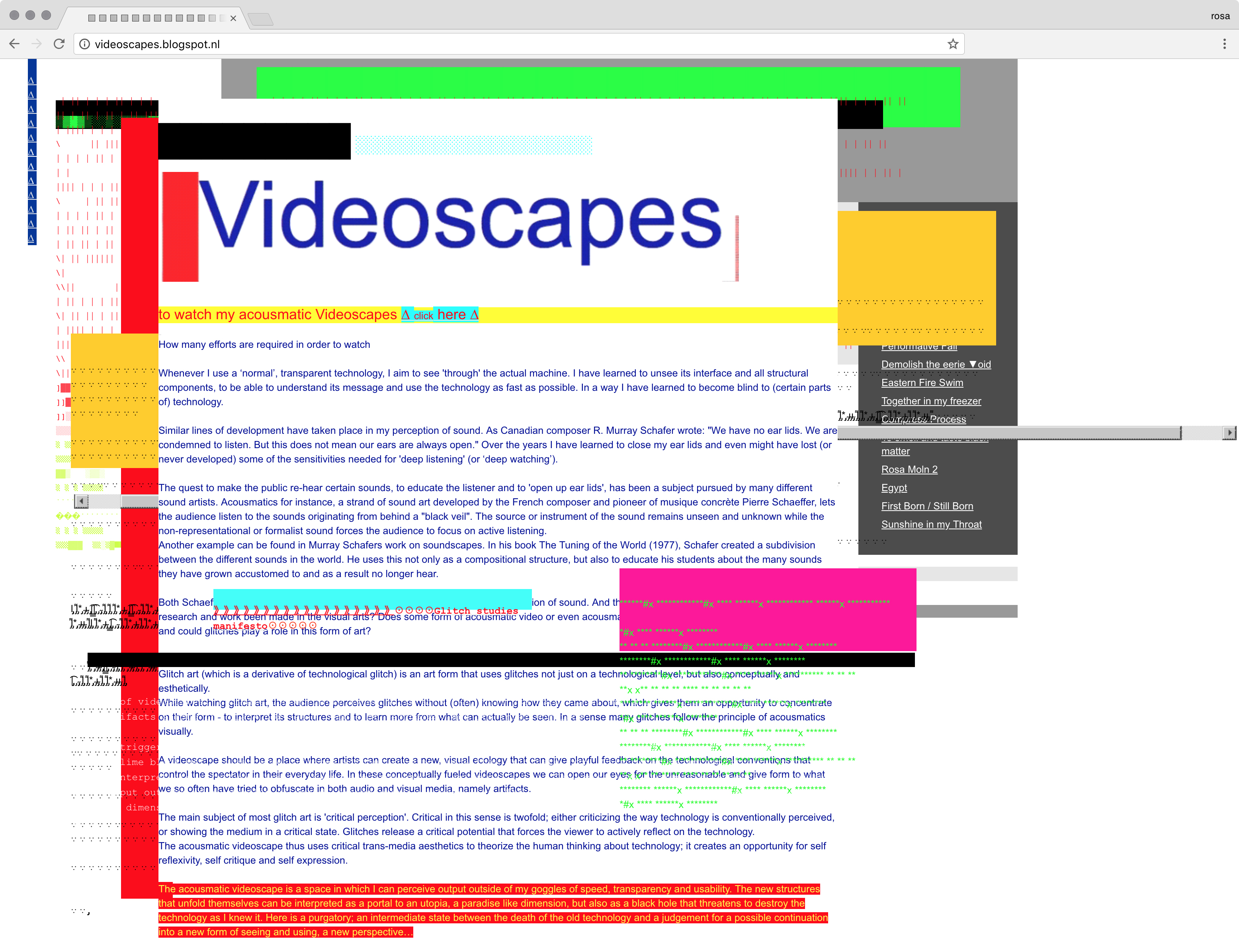
How many efforts are required in order to watch?
Whenever I use a ‘normal’, transparent technology, I aim to see 'through' the actual machine. I have learned to unsee its interface and all its structural components. I am able to understand its message and use the technology as fast as possible. In a way I have learned to become blind to (certain parts of) technology.
Similar lines of development have taken place in my perception of sound. As Canadian composer R. Murray Schafer wrote: "We have no ear lids. We are condemned to listen. But this does not mean our ears are always open." Over the years I have learned to close my ear lids and even might have lost (or never developed) some of the sensitivities needed for 'deep listening' (or ‘deep watching’).
The quest to make the public re-hear certain sounds, to educate the listener and to 'open up ear lids', has been a subject pursued by many different sound artists. Acousmatics for instance, a strand of sound art developed by the French composer and pioneer of musique concrète Pierre Schaeffer, lets the audience listen to the sounds originating from behind a "black veil". The source or instrument of the sound remains unseen and unknown while the non-representational or formalist sound forces the audience to focus on active listening.
Has similar research and work been made in the visual arts? Does some form of acousmatic video or even acousmatic videoscapes exist? What would this look like and could glitch play a role in this?
While watching glitch art, the audience perceives glitches without (often) knowing how they came about, which gives them an opportunity to concentrate on their form - to interpret its structures and to learn more from what can actually be seen. In a sense many glitches follow the principle of acousmatics visually.
A videoscape should be a place where artists can create a new, visual ecology that can give playful feedback on the technological conventions that control the spectator in their everyday life. In these conceptually fueled videoscapes we can open our eyes for the unreasonable and give form to what we so often have tried to obfuscate in both audio and visual media, namely artifacts.
The main subject of most glitch art is 'critical perception'. Critical in this sense is twofold; either criticizing the way technology is conventionally perceived, or showing the medium in a critical state. Glitches release a critical potential that forces the viewer to actively reflect on the technology.
The acousmatic videoscape thus uses critical trans-media aesthetics to theorize the human thinking about technology; it creates an opportunity for self reflexivity, self critique and self expression.
The acousmatic videoscape is a space in which I can perceive output outside of my goggles of speed, transparency and usability. The new structures that unfold themselves can be interpreted as a portal to an utopia, a paradise like dimension, but also as a black hole that threatens to destroy the technology as I knew it. Here is a purgatory; an intermediate state between the death of the old technology and a judgement for a possible continuation into a new form of seeing and using, a new perspective…
︎ Videoscapes
